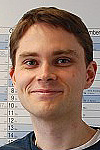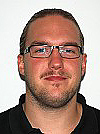Sensor Principles and Integrated Interface Circuits
Modulgruppe: Sensorik
The students can identify the most relevant noise sources in sensors and sensor readout electronics and predict their effect on the achievable limit of detection.
Introductory Lecture:
- new dates will be announced
The Description of the module you find here.
1. Motivation and example sensor Applications
- Chemical sensors (pH sensors, gas sensors, ...)
- Sensors for mechatronics (Hall sensors, gyroscopes, pressure sensors, ...)
- Medical imaging sensors (MRI detectors, X-Ray and CT detectors, ultra-sound transducers, ...)
2. Noise in sensors and integrated sensor readout circuits
3. Sensor types
- Self-generating vs. modulating sensors
- Electrical behavior (R, L, C, I-source, V-source, etc.)
4. Readout concepts
- Amplitude and frequency sensitive detection
- Resonant readouts
- Phase-sensitive detection (Lock-in amplifiers)
- Continuous-time vs. discrete-time readout
- Open-loop vs. closed-loop readout
- Absolute vs. difference measurements
5. Readout circuit implementations
- Instrumentation amplifiers
- Transimpedance amplifiers
- Switched-capacitor readout circuits
6. Data converters for sensor readouts
- A/D converters
- D/A converters
- T/D converter
The students can identify the most relevant noise sources in sensors and sensor readout electronics and predict their effect on the achievable limit of detection. They can distinguish between self-generating and modulating sensors and classify different sensor types with respect to their electrical behavior. The students distinguish different readout concepts including amplitude, phase and frequency sensitive detection and apply these concepts to design example sensory systems. They can explain the advantages and disadvantages of continuous and discrete sensor readout circuits for a given application context. The students can differentiate open-loop and closed-loop readout concepts and identify the pros and cons of each approach for a given target application. The students evaluate the performance difference between absolute and difference measurement systems and their applicability for the formation of integrated circuit based sensors and sensor readouts. The students analyze and synthesize important readout circuit configurations including instrumentation amplifiers, transimpedance amplifiers and switched capacitor readout circuits. The students analyze and compare different A/D and D/A converter structures concerning their achievable performance and suitability for a given sensor application. The students can explain the concept of time-to-digital conversion and analyze common T/D converter architectures.
The online part of the study programme takes place in self studies and in form of group work. For the self study part video lectures with detailed information about the contents and an elaborated script is offered. The script is developed especially for extra-occupational learners in regard to the didactic concept of Ulm University. It contains learning stopps, multiple and single choice tests, quizzes, exercises, etc.
Your mentor will offer online seminars in periodic intervals. These seminars will help you handling the exercises and working on the learning matters. An online forum for exchange with the other students will also be available.
Requirement is a first graduate degree.
Inhaltlich: Grundkenntnisse in analogen integrierten Schaltungen sind für eine erfolgreiche Kursteilnahme empfehlenswert.
Recommended requirements:
- Desktop computer or notebook, with a supported version of Microsoft Windows, Apple macOS or Linux
- Headset
- Current version of Mozilla Firefox, Google Chrome, Apple Safari or Microsoft Edge
- Access to the internet (e.g., via xDSL, Cable, LTE, 5G) with a minimum data rate of 3 Mbit/s for downstream and 384 kbit/s for upstream.
In case of questions regarding the technical requirements, please don't hesitate to contact us.
Attendance at the webinar (online presentation with groups of about 4 to 5students at a time). Successful participation (attendance time: 66 %) in thewebinar (attendance certificate) is a requirement for admission to the exam.Assessment will normally be in the form of an oral exam, or otherwise a writtenexam of 90 minutes duration.
After finishing your exame successfully you will get a certificate and a supplement, which will list the contents of the module and the competencies you have acquired. In the supplement the responsible person for the module confirms you the equivalent of 6 credit points (ECTS).
Lecturers

Prof. Dr. Jens Anders
Head of the Institute of Smart Sensors, University of Stuttgart

Denis Djekic
Academic staff member of the Institute of Smart Sensors, University of Stuttgart
